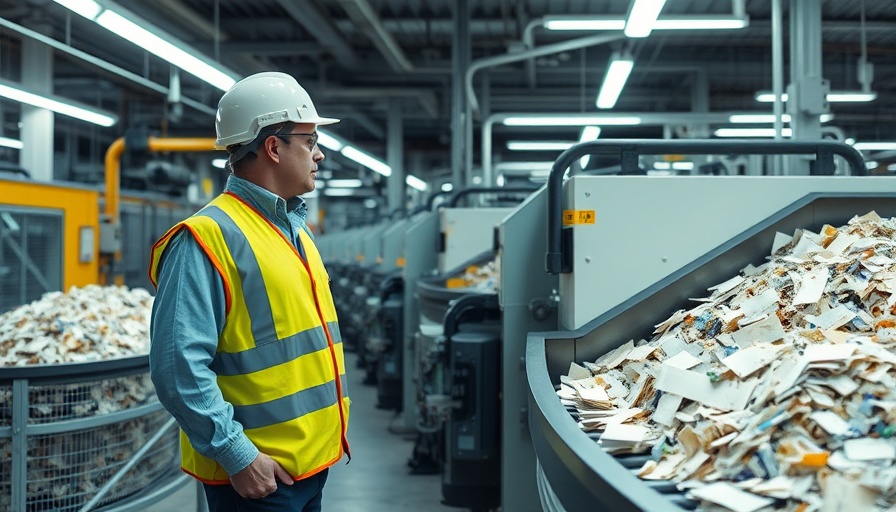
Amazon's Glacier and the Future of Robotics in Recycling
As the recycled waste crisis looms larger, innovative companies like Glacier are stepping up with solutions aimed at easing the burden of waste management. With a recent $16 million funding boost, this Amazon-backed startup is ready to expand its fleet of robots designed to revolutionize the recycling process.
The Mountain of Waste We Face
The United Nations warns that by 2050, the amount of waste we generate could nearly double to an astonishing 3.8 billion metric tons. Traditional recycling systems are buckling under the strain of unsorted materials and dwindling workforce numbers. “Many MRFs (Materials Recovery Facilities) can’t find enough reliable staff due to the high turnover rates,” says Rebecca Hu-Thrams, Glacier’s co-founder. This reality drives demand for automated sorting systems like Glacier's.
How Glacier is Pioneering Robotic Recycling
Glacier utilizes robotic arms with computer vision capabilities to identify and sort over 30 different types of recyclables. This innovative approach significantly increases the efficiency of recycling processes, as robots outperform humans in identifying and separating material types. According to Areeb Malik, Glacier’s CTO, “With AI, we are performing better than manual sorting.”
Robotics vs. Human Labor: A Difficult Choice
The struggle to recruit staff for MRFs is compounded by labor dynamics in nearby industries. Hu-Thrams highlights, “The wages might be better, but who wants to spend their days sorting trash when they could work in a comfortable warehouse?” This sentiment illustrates the pressing need for automation in the recycling industry. Glacier's robots provide a reliable alternative, allowing MRFs to maintain operations even amidst labor shortages.
Expanding the Fleet: Investment and Future Growth
With the recent funding led by the Ecosystem Integrity Fund and participation from several major investors like the Amazon Climate Pledge Fund, Glacier is poised for rapid expansion. This will help the startup deploy its robots not just in the Bay Area but across cities like Seattle, Phoenix, and Chicago. The scalability of Glacier's technology raises exciting opportunities for municipalities to improve their recycling rates.
The Role of Data in Modern Recycling
In addition to robotic arms, Glacier is offering a data product that provides insights to MRFs about their operational efficiencies. This could illuminate glaring gaps in the recycling chain, helping companies and regulators understand why certain materials aren’t being processed effectively. “Understanding the waste stream is crucial for improving recycling efforts,” Hu-Thrams notes.
A Call to Action: Join the Recycling Revolution
The expansion of Glacier's robotic recycling fleet presents a significant opportunity for startups interested in sustainability and technology. Entering the green tech space can not only contribute to environmental efforts but can also align with the growing consumer demand for eco-friendly solutions.
Conclusion: The Future is Robotic Recycling
As recycling systems evolve, companies like Glacier are pioneering strategies that might lead the way towards a more sustainable future. By embracing technology—through innovation and investment—startups can play a pivotal role in shaping how we address our waste challenges. If you are an aspiring entrepreneur looking to make a mark in this field, consider exploring routes such as business startup grants, small business startup ideas, and innovative recycling solutions that make a difference.
 Add Row
Add Row  Add
Add 



Write A Comment